Cool Fedex Cup Infographic –

Produced by Aford Awards a UK manufacturer of golf trophies as well as other glass sports trophies.

Your Online Golf Handicap Blog
Cool Fedex Cup Infographic –

Produced by Aford Awards a UK manufacturer of golf trophies as well as other glass sports trophies.
For those of you who follow our blog, one of our guest posters is Shawn Augustson, a student at the College of Golf and writes the blog Golf with Shawn and has shared with us some of his recent lessons. Here is one such post for the benefit of MyScorecard members.
We have many different reasons why we like to golf. Some find it as a way to relax, others enjoy the challenge… but the common denominator is that we all find it fun. This leads me to the question that if we want to have fun, why do we set ourselves up for failure at the first tee?
I have friends who like to stretch the course out and play as far back as they can. “I want to get my money’s worth and see the entire course”, is what I have heard time and time again.
The simple reality is this. They do not have the skill set to play from the distances they “feel” they need to play at. They start off with high hopes but after a few holes there is a lot of complaining, self-doubt, and threatening to quit the game forever.
This could all have been avoided and they could have had much more fun had they moved up to a tee that was more comparable to their game.
We need to change our mindset and play the game where we can score and have fun. When I was attending the College of Golf, Dr. Wilson, PGA Master Professional, and Director of Golf would challenge us to play from the first set off tees. “If you can shoot par or better there, then move back one set until you shoot par or better from there, etc.” he would say to us.
The Tee It Forward program has a really good yardage recommendation based of the players average drive distance:
| Driver Distance | Recommended 18-Hole Yardages |
| 275 | 6,700-6,900 |
| 250 | 6,200-6,400 |
| 225 | 5,800-6,000 |
| 200 | 5,200-5,400 |
| 175 | 4,400-4,600 |
| 150 | 3,500-3,700 |
If you are finding that the game of golf is becoming frustrating, my challenge for you is this… with your next round of golf, move up one set of tees from where you normally play from. Move it forward and have fun. See you on the tee at Westchester Golf Course!
Continuing with our series from the The Itinerant Golfer’s quest to play all top 100 American golf courses, The Scratch Pad is glad to bring you a profile of the 15th in the list – Chicago Golf Club.
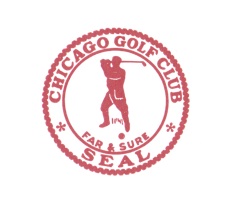 Architect: C.B. MacDonald / Seth Raynor
Architect: C.B. MacDonald / Seth Raynor
Year: 1894 / 1923
– Course Access: Private
– Driving range available
– Motorized golf carts and caddies available
– On-site accommodations
– U.S. Open – 1897, 1900, 1911
So why is the Chicago Golf Club one of the most important clubs in America you ask? Where shall we start? Lets see, for starters it was the first 18 hole golf course in North America and the club that established the modern Out of Bounds rule. Next, you have that the club was founded by the first US Amateur champion and de facto father of American golf, Mr. Charles Blair Macdonald. If any more evidence of the clubs importance were necessary, you can make note that Chicago Golf Club is one of the original five clubs that founded the USGA in 1894. If you’re looking for a place that has had a profound impact on golf in America, look no further than Wheaton, Illinois and the Chicago Golf Club.
And why has the golfing public at large never heard of this clearly significant and important club? Well, there are just 125 members and a great many of them play their primary golf at other clubs in the area. This results in very, very little play at Chicago Golf Club. The lack of play also means that guest invites are terribly rare, and truly something to be cherished by the lucky golfers who receive one. When I started the Top 100 quest back in 2007 I identified Chicago Golf Club as one of the five courses that may keep me from completing the quest. Everything I learned over the next three years confirmed that my fears were indeed well founded. In short, getting a chance to play Chicago Golf Club may be as likely as getting struck by lightning.
When the day arrived and I pulled into the driveway at Chicago Golf Club I was pretty excited. After parking my car I went into the locker room to change my shoes and have a look around. The first thing I noticed in the locker room were the cool subway tiled walls which were very popular in the late 1800s/early 1900s and the old metal lockers found at many of the great clubs from this era. I love a locker room with a vintage vibe so I had a good feeling about this place immediately. As would be expected the walls were adorned with golf memorabilia from the club’s history including one of the five original signed documents incorporating the USGA. It was pretty neat to see this important golf document and C.B. Macdonald’s bold signature in the flesh.
Before we tee off so to speak, I’ll give a very brief history of the course itself. Chicago Golf Club was founded in 1892 and at the time was located in Downers Grove, Illinois on Belmont Avenue. In early 1894 the club moved to the current location and C.B. Macdonald laid out the first 18 hole golf course in the United States. As years went by Macdonald felt that the technology of the game was advancing beyond the golf course he had created and it was necessary to redesign the course. He requested his protegee, Seth Raynor, do the work and in 1923 a new course was born. Raynor’s revisions and changes along with a handful of Macdonald’s original holes is the course that remains today.
As we prepared to start our game and discussed the tee selection there was not really much of a decision necessary as far as I was concerned. The back tees played 6,846 yards which on a par 70 course is a pretty serious test. We elected for the considerably more manageable 6,571 yard white tees.
The 1st hole is a 450 yard par 4 and is absolutely not your typical warm up starting hole. The golfer needs to be at ready from the start when teeing it up here. The photo below was taken from the tee and the best line of play is up the right side of the hole as the fairway falls off to the left.
The photo below is where I hit my approach shot from (the rough of course). I was still a good 200 yards out.
The 2nd hole, pictured below, is Raynor’s version of the Road Hole at St. Andrews. This one plays 440 yards from the white tees. Anything in the middle is just great here. The approach shot will be another long one.
The photo below is of the approach shot on the 2nd hole. Note the Road Hole bunker at the front left.
Continue reading “Top 100 Courses: #16 Chicago Golf Club”
During the 2010 final round of the AT&T National, Sean O’Hair, hit a wayward drive on the 18th tee and nailed spectator Chris Logan the temple. Normally that’s not a good thing, but getting hit in the head ended up saving Chris’s life.
It turns out that when checking Chris for a concussion doctors noticed a lump in his throat that turned out to be Thyroid Cancer. Luckily it was caught early and Chris is now cancer-free.
Because of the concern of a head injury, the tournament medics rushed him away and Chris never actually got to meet Sean after getting hit. However in the mid 2011, he was finally able to meet Sean in person and thank him for hitting him in the head and saving his life.
I’m guessing that’s probably the first (and last) time O’Hair will get thanked for hitting somebody in the head with a drive.
Derek @ 72strokes.com
Ballyliffin club, founded in the year 1947 is Ireland’s most ‘northerly’ golf club. Located in the extreme north-east of the Republic of Ireland close to the Inishowen Peninsula, Ballyliffin comprises of 365 acres of spectacular dune land which is surrounded by hills and mountains with the only borderline being the Atlantic Ocean.
Two outstanding and distinct 18 holes link – the classic Old Links and the wonderful new Glashedy Links, a world-class club house, and an unprecedented panoramic view of mountains and coastline make up Ballyliffin Golf Club a stunning and an amazing destination to sport. The Old acreage is designed by Mother Nature herself with little succor from Eddie Hackett and English architects – Lawrie and Pennick, who offered a final touch to the course.
The Old Links undulate in a natural setting that provides a sense of tranquility, presenting an immensely enjoyable challenge to every golfer. Running across 6,937 yards from the championship tee and a par of 71 with sweeping ocean views, the old links offer many fantastic holes with challenging fairways riding dangers at every turn. Upon his first visit to Ballyliffin in the 1990s, Faldo reportedly fell so in love with the Old Links that he stayed overnight to finish playing all 18 holes and attempted to buy the club which was later turned down. But nevertheless his work at the Old Links clearly showcases his attachment to the place. Faldo renovated all the bunkers and repositioned several tees, allowing for more awe-inspiring views of the Glashedy Rock off the coast.
The Old Course at Ballyliffin is the most natural course I have ever played.”
– Nick Faldo
Glashedy measures over 7,000 yards from the Championship tees with large undulating greens, deep bunkers and fairways that twist and roll between towering dunes. The challenges presented by the Glashedy Links are almost as intimidating as exciting. Many regard the Old Course as ‘better’ than the newer Glashedy course and this is because, without doubt, Glashedy is a severely punishing golf test that demands you to be on top of your game from start to finish. But nevertheless both these wonderful courses guarantees a lifetime experience for any golf lover, especially to a keen golfer who appreciates beautiful views and challenging courses.
There have been a few times in our sport’s history where it seemed the world held its breath to watch golf. It likely happened in 1930 when Jones capped off the unthinkable ‘Grandslam’ win. Again in Augusta, Georgia, when Nicklaus awakened from hibernation at the age of 46 to win his sixth green jacket. Most recently, Tiger in 2008 as he hobbled to victory on a torn knee. It’s moments like these that become the greatest marketing campaign our sport could ever get.
There’s arguably no other sport where the perception of a level playing field exists — even the early duffer can sink a 40 footer every now and then. While with other sports, it becomes certain at point, playing baseball at Wrigley or dunking on Lebron is unlikely.
Despite our game’s significant advantages in appeal, it takes considerable effort to understand and appreciate its depths. The idea that you can be just as good as Tiger on one hole won’t resonate with the average golfer until they’ve played enough to develop confidence and skill. The feeling of striking the perfect shot is addicting. Yet, knowing that perfect shot is still in you after the third duffed shot in a row is the ultimate enigma. But golf is in a decline; if it were a stock, Wall Street would be yelling “sell!”
Even a polished Power Point presentation couldn’t disprove the numbers. “Rounds played per year” is the standard barometer of measuring the sports popularity, however a much more alarming data point comes from a source most of us use every day: Google. Search terms with the word “golf” have steadily dropped year after year since 2004. It’s down 40% since 04’. You can see below, each summer, the game hits its annual peak, falls in the winter months, only to rise again during Masters’ time (indicated by bump in April).
Continuing with our series from The Itinerant Golfer’s quest to play all top 100 American golf courses, The Scratch Pad is glad to bring you a profile of the 25th rated golf course in America, Prairie Dunes CC. Click here for other entries on this series click.
Location: Hutchinson, KS
Architect: Perry Maxwell/Press Maxwell
Year Constructed: 1937/1957
Played: October 9, 2010
Prairie Dunes perennially ranks in the Top 25 courses in the US and is a bit of a ‘hidden gem’ among golf nerds . . . well, as much of a hidden gem as you can be when you’re listed in the Top 25 every year.
Because of the golf course’s high ranking on most of the major lists, Prairie Dunes enjoys a very robust non-resident membership, creating an interesting dynamic at the club. On one hand you’ve got your local families who use the club for tennis, golf and swimming and on the other hand you’ve got your hard core golf aficionado crowd with their Pine Valley, Cypress Point and National Golf Links logos bringing in groups of their friends on golf trips. I have to believe there are a number of local members who must scratch their heads and think “why on earth did this guy from New York City join our little club??” I also have to believe that the board of directors meetings get pretty interesting with two distinctly different member groups to serve – each of whom have a different set of needs.
The golf course at Prairie Dunes Country Club has quite an interesting story to it. Perry Maxwell was the first architect on the site who, in 1937, laid out the original nine hole course. The course remained this way for twenty years until his son, Press Maxwell, came along in 1957 to add nine more holes and make a full eighteen hole course. Unfortunately, it wasn’t as simple as just adding holes 10-18 to complete the course. The land that Press wanted to work with didn’t allow him to keep the original number sequence for the first nine holes so he ended up having to do a little renumbering. The original nine holes play today as 1, 2, 6, 7, 8, 9, 10, 17, 18.
At first glance Prairie Dunes doesn’t appear terribly long but it only plays to a par of 70 so the tips that play 6,759 yards are a little longer than they appear. Since it was our first trip around the course we decided to play the 6,153 yard white tees which had a rating of 71.2. That rating translates to 1.2 strokes over par for a scratch golfer and is usually a sign that a course will play fairly tough.
The photo below was taken at the 1st tee. The first hole is a dogleg to the left that played 401 yards from the white tees. If you get too cute and try to go too far to the left there is a ton of rough over there waiting for your ball to nestle down into it. Take note of the brown native grass lining the hole. Out in Kansas they call this “gunsch” and it will swallow a golf ball up just as quick as water does.
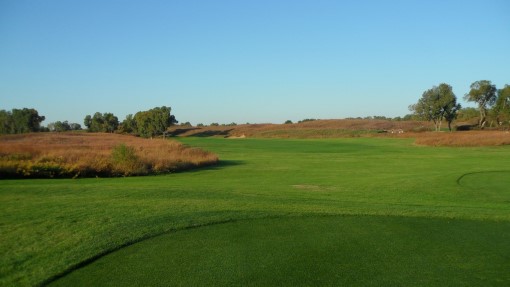 The approach to the 1st green is pictured below. It takes a pretty lengthy and well placed drive to have a short iron into the green. Most of the guys in our group were hitting mid or long irons in.
The approach to the 1st green is pictured below. It takes a pretty lengthy and well placed drive to have a short iron into the green. Most of the guys in our group were hitting mid or long irons in.
Below is a closer look at the green. It really can’t be seen in this photo but this was a pretty severe green and could be very penal if your ball ends up in the wrong spot.
The 2nd hole is a fairly short par 3 that plays 142 yards from the white tees. The green sits at the top of a hill so a little extra club is necessary. The photo below was taken from the tee.
Continue reading “Top 100 Courses: #25 Prairie Dunes Country Club”
Following up on our first post of iconic golf moments, below we share photographs of key moments in the game of golf. Have we missed any?
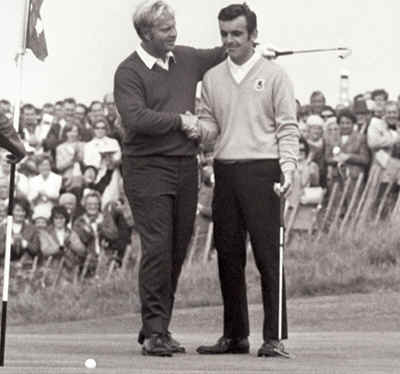
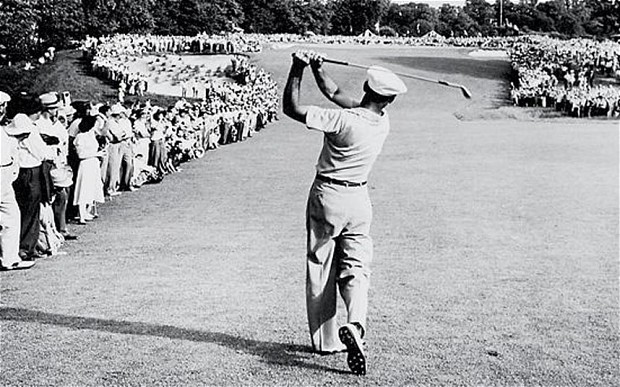
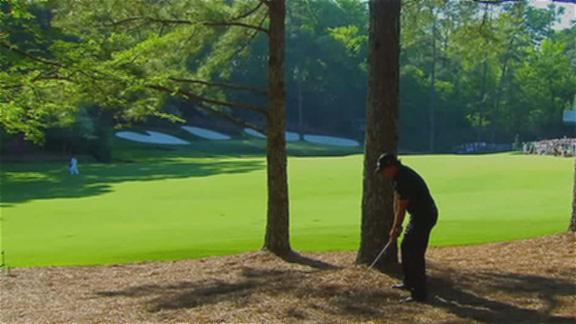
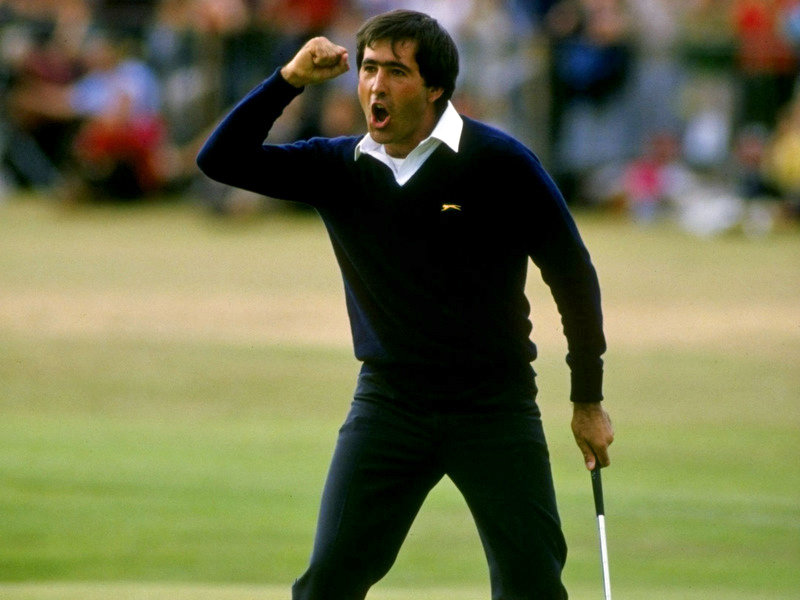
Continue reading “Iconic Moments in Golf – Part 2”
Over its history, the game of golf has had its share of iconic moments – inspirational events that are remembered by all golfers. Below, in pictures, our Scratchpad team lists a few of these iconic moments. Which ones are we missing?
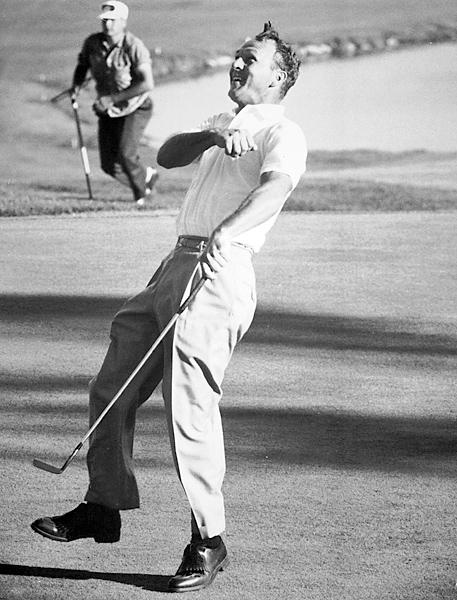
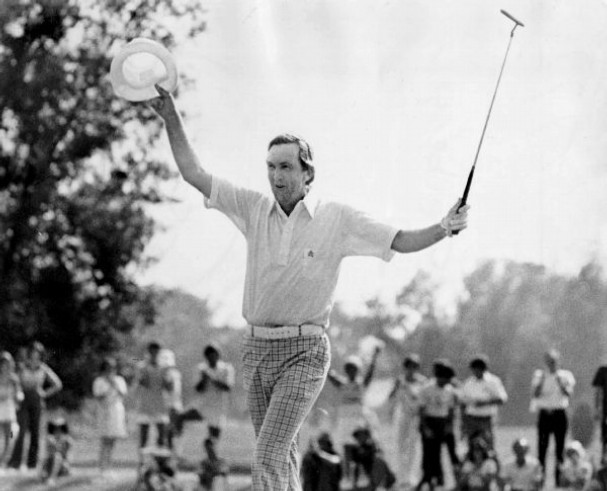
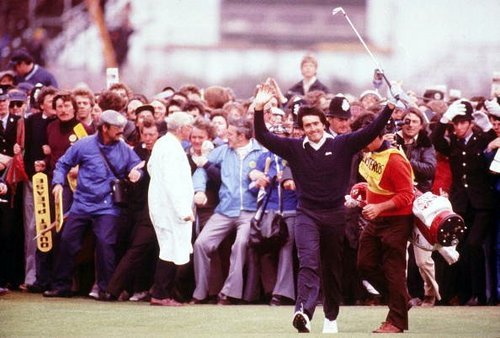

Continue reading “Iconic Moments in Golf – Part 1”